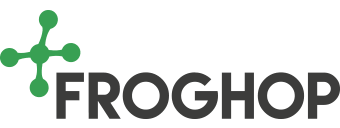In the UK 1.5 million people suffer from food allergies and the food industry must support them to make informed choices. Let’s take a closer look at allergens and food production, and your responsibilities as a food producer.
What are food allergies?
The NHS definition is: “Food allergies happen when the immune system – the body’s defence against infection – mistakenly treats proteins found in food as a threat. As a result, a number of chemicals are released. It’s these chemicals that cause the symptoms of an allergic reaction.”
Symptoms can occur within minutes or may take up to an hour or more after ingestion. Although many reactions are mild, others can be very serious, even life-threatening.
While almost any food protein can cause an allergic reaction, the most common food allergens in Europe are listed in the current allergen labelling legislation, these are:
- cereals containing gluten – wheat, rye, barley, oats, spelt, kamut
- crustaceans
- egg
- fish
- peanuts
- milk
- nuts – almond, hazelnut, walnut, cashew, pecan, Brazil nut, pistachio, macadamia and Queensland
- soya
- sesame
- celery
- mustard
- sulphur dioxide and sulphites
According to the Food Standards Agency (FSA), the proportion of the population with true food allergy is approximately 1-2% of adults and about 5-8% of children, which equates to about 1.5 million people in the UK. One of the main challenges for food producers is that very small amounts of an allergen, sometimes less than one milligram (one thousandth of a gram), can trigger a reaction.
A note on coeliac disease: it is not an allergy but an autoimmune disease triggered by gluten (found in wheat, rye, barley and oats) which causes an inflammatory response that damages the gut. However, people who don’t have coeliac disease can be allergic to cereals, such as wheat.
Ensuring clarity for the consumer
For consumers with food allergies and intolerances, it’s crucial to be able to understand the nature and components of the foods they buy. They need to be able to read clear labelling of both allergenic ingredients and any cross-contamination with allergens in order to make informed food choices.
The FSA has produced voluntary best practice guidance to ensure allergen labelling can be as effective as possible. It says: “Advisory labelling should only be used when, following a thorough risk assessment, there is a demonstrable and significant risk of allergen cross contamination.”
The FSA also states that avoidance of allergens due to cross-contamination is particularly important for those allergenic foods which affect a higher proportion of people as well as for those allergic people who are more likely to have life-threatening reactions. It’s important to note these proteins can often survive food-processing conditions.
Most allergens don’t have a threshold at which point they begin to have an impact. For instance, one molecule of peanut protein can cause anaphylactic shock. Gluten is the exception to this with a stated EU threshold of 20ppm. However, lab tests can’t test for absolutely zero presence, they have a testing tolerance too.
Setting an industry example with risk assessments and due diligence
Many food businesses have taken a ‘blanket’ approach to allergen labelling to ensure they minimised their own risk. So it’s still common to see “may contain nuts” or similar wording on products. Ultimately, this approach is detrimental to people with allergies, vastly and needlessly restricting their choice. Today, there is a move away from these practices to accommodate a growing sub-section of consumers.
Risk assessment for allergens and food production
Our advice is to perform a genuine risk assessment and targeted due diligence to establish the true likelihood of an allergen being present. This means evaluating the likelihood of unintentional allergen cross-contamination across the supply chain, from raw materials through to the finished product. Include, also the product design and development in your analysis. Following completion, you can then determine whether or not allergen advisory labelling is appropriate on the finished product.
Food and Drink Europe outlines the critical elements for risk management in the case of allergens and food production:
- People: their training and personal hygiene
- Suppliers: know each supplier’s understanding and approach to allergen risk management
- Raw materials handling: clear identification, storage and minimising the possibility of cross-contact
- Equipment and factory design: look at layout, dedicated lines, movement control, cleaning, airflow
- Manufacturing: separation, labelling, packaging and post-production controls, rework
- Consumer information: labelling, non-commercial samples
- Product development and change: reformulation and new product development
- Documentation: record keeping
